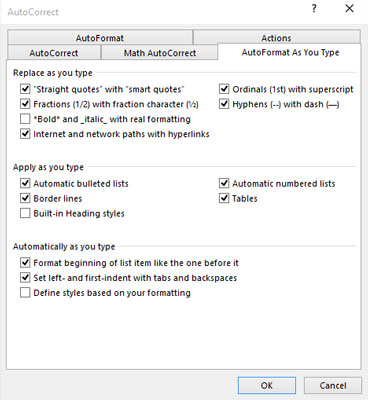

Now, you can enjoy the convenience of having a word or phrase be defined with your specific formatting, thanks to AutoCorrect. When you’re done, simply click “Add” and then “Ok”. Just remember that the word/phrase is case sensitive. In the “Replace text as you type” section, select “Formatted text.” In the “Replace” box, enter the word or phrase you want to auto-format. With this, a small window will populate, after which you should tap the A key. Then, select the text and press the keyboard shortcut: Alt+T. Once done, format it the way you like it: bold, italic, smaller or bigger font size, different font face, different color, or whatever you want. To do this, all you have to do is to type a word or phrase to be auto-formatted. If you want to change this auto-format later on, you can still do so and the changes will automatically apply. For example, you can auto-format underline, italics, or bold type on a particular word or phrase so that each time you type it in, MS Word will automatically do it for you. With Word’s Auto-Formatting feature, called AutoCorrect, you can set your auto formats so that you don’t have to do everything. And then, another whole set of changes may require you to do everything all over again. This can take hours and even days for very extensive documents such as white papers and technical literature. Manually applying a style takes time so it’s easier to just auto format a word or phrase instead. There are keyboard shortcuts that make it easier to apply these styles and a format painter tool to apply complex formatting to large chunks of text. applying bold, underline, and italic styles to text.
#AUTOMATIC TEXT FORMATTING IN WORD MANUAL#
With manual formatting, you have to go over each instance of formatting change to apply what needs to be done. MS Word also has basic text formatting i.e. This is exactly why Word has come out with automatic formatting features that take out the hassle off the equation. Not doing this can result in a disjointed looking presentation. You have to go through every paragraph and page, thoroughly looking at any deviation in your set format. This is true especially when it comes to editing large chunks of text or comprehensive documents, from technical papers to novels. This is because formatting can be extensive, time-consuming, and meticulous work when done manually.

When it comes to formatting, things can get pretty tedious and repetitive even in Word, that is, if you don’t know the workaround to it.
#AUTOMATIC TEXT FORMATTING IN WORD HOW TO#
Aside from the basics, which include applying a variety of text styles to documents, Word still retains its set of handy keyboard shortcuts to make formatting a breeze. Let’s take a look at how to set automatic text formatting for words and phrases in Word. Word offers an intuitive interface, as well as a richer, robust, and user-friendly feature that makes life and work easier. One of these features is formatting, which Word has a rich set of options that newbies can appreciate and experts can’t get enough of. Through the years, it has managed to keep up with the times–with technology, as well as what people need. In fact, it’s one of the most used and trusted applications for word processing. Microsoft Word has been around for years.


 0 kommentar(er)
0 kommentar(er)
